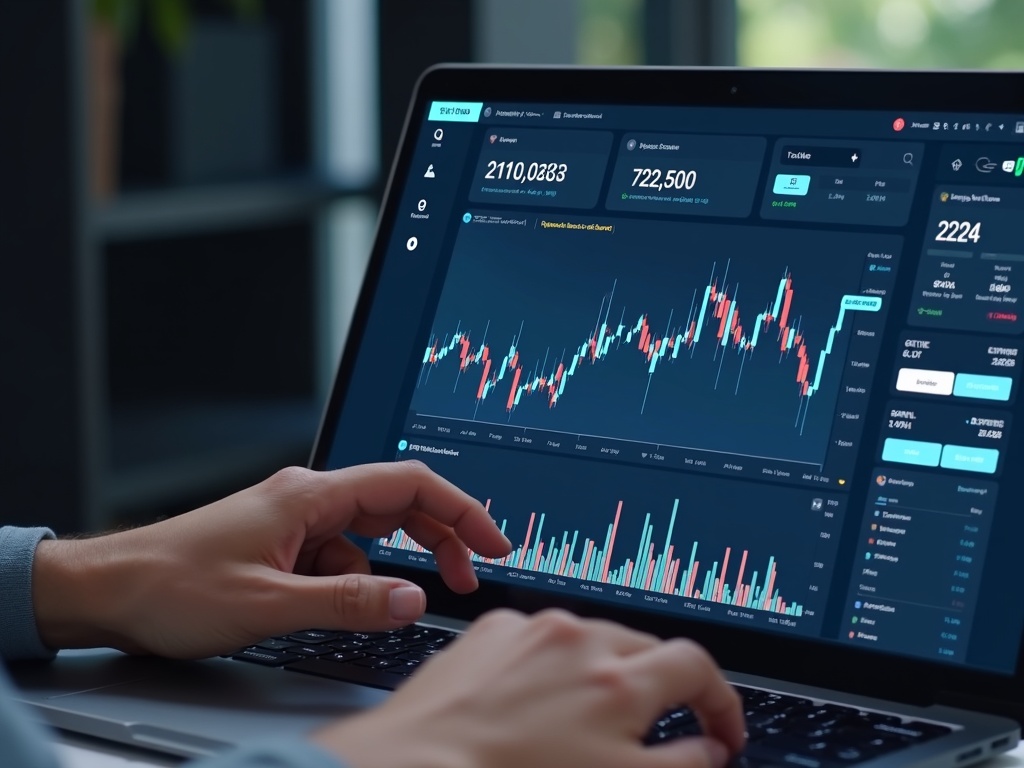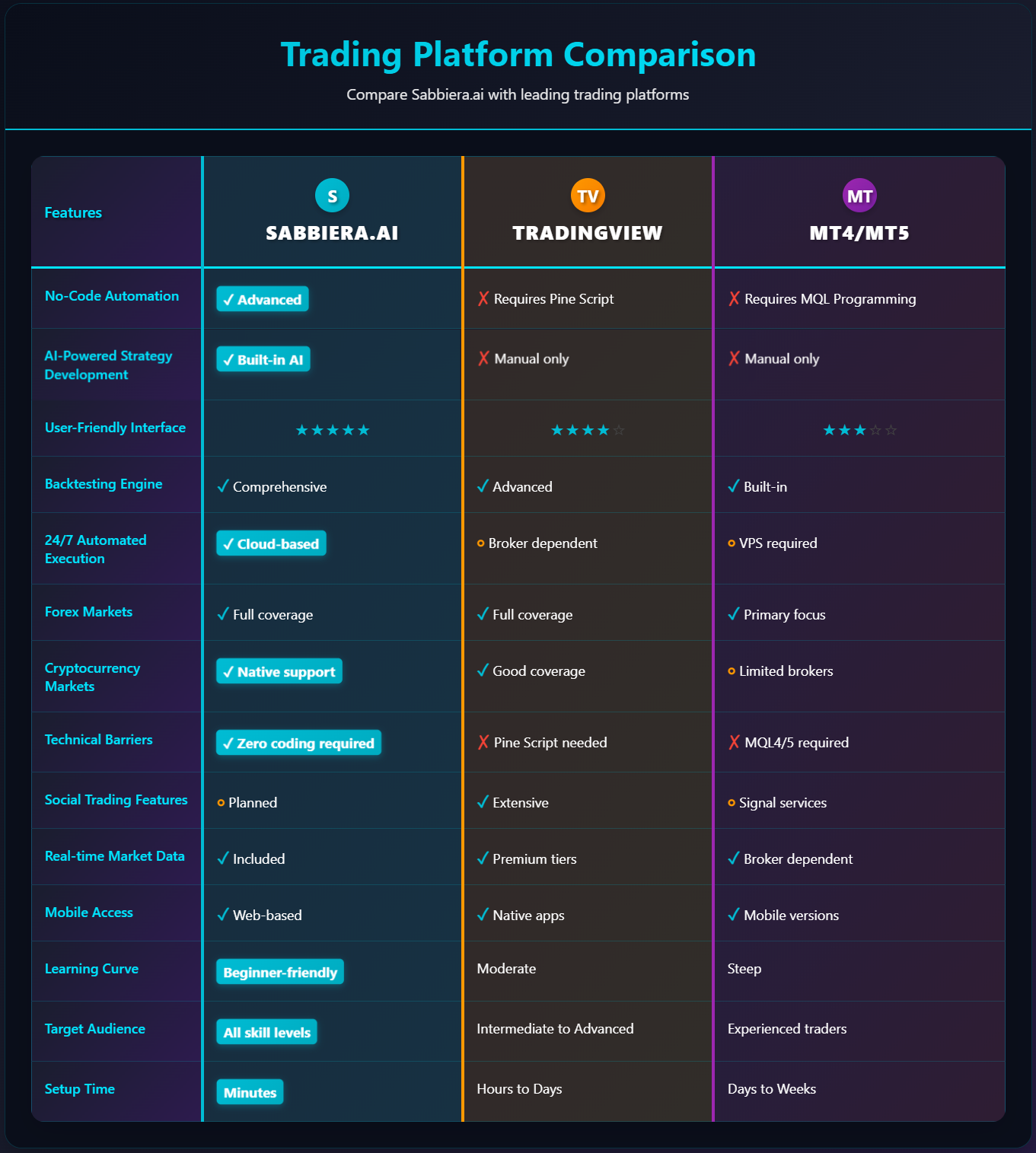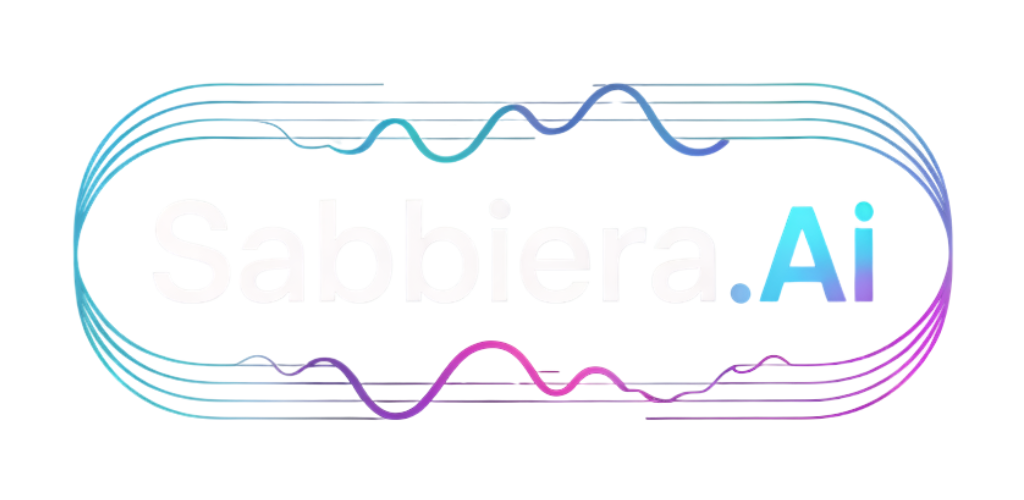What is the best trading platform? 10 Trading Platforms You Need To Know

Introduction: The Evolution of Trading Platforms
The trading landscape has undergone a dramatic transformation over the past two decades. Gone are the days when executing a trade required a phone call to a broker or a visit to a trading floor. Today's digital trading platforms have democratized access to global markets, putting sophisticated trading tools directly into the hands of retail traders worldwide.
This evolution from traditional to digital trading has fundamentally changed how we approach financial markets. Modern trading platforms offer real-time market data, advanced charting capabilities, and execution speeds measured in milliseconds rather than minutes. What once required significant capital and institutional connections is now accessible through user-friendly interfaces on smartphones and laptops.
The importance of choosing the right trading platform cannot be overstated. Your platform choice directly impacts your trading costs, execution quality, available markets, and ultimately, your profitability. A platform that suits a day trader focused on forex markets may be completely inadequate for a long-term investor building a diversified portfolio. Similarly, a beginner's needs differ vastly from those of an experienced trader looking to implement complex strategies.
Perhaps the most significant recent development in trading platforms is the integration of automated trading and artificial intelligence. These technologies have moved beyond institutional trading floors and are now accessible to retail traders. Automated trading systems can execute strategies 24/7, remove emotional decision-making from trading, and process market data at speeds impossible for human traders.
AI integration has further enhanced these capabilities, enabling platforms to analyze market patterns, optimize trading strategies, and even generate trading signals. This technological advancement has leveled the playing field, allowing individual traders to compete with sophisticated institutional strategies that were previously out of reach.
Trading platform evolution timeline
From phone-based execution to AI-assisted platforms, retail access has expanded massively while user experience and execution quality have improved in lockstep.

What Makes a Trading Platform the "Best"? Key Features to Consider
Determining the "best" trading platform isn't a one-size-fits-all proposition. The optimal choice depends on your trading style, experience level, and specific requirements. However, several key features consistently distinguish superior platforms from mediocre ones.
User interface and ease of use form the foundation of any great trading platform. A cluttered, confusing interface can lead to costly mistakes, especially during volatile market conditions. The best platforms strike a balance between comprehensive functionality and intuitive design. They provide quick access to essential features while allowing customization for different trading styles. Whether you're executing a quick scalp trade or conducting detailed market analysis, the interface should facilitate rather than hinder your workflow.
Security and regulation represent non-negotiable aspects of platform selection. Your chosen platform should be regulated by reputable financial authorities and employ bank-grade security measures. This includes encryption of sensitive data, segregated client funds, and regular security audits. The regulatory environment also affects available features and protections, making it crucial to understand your platform's compliance status.
Asset variety and market access determine your trading opportunities. While some traders focus exclusively on forex or stocks, having access to multiple asset classes can provide diversification and additional profit opportunities. The best platforms offer comprehensive market coverage, including forex, cryptocurrencies, stocks, commodities, and indices, all through a single interface.
Fee and commission structure significantly impacts your bottom line, especially for active traders. Beyond basic commission rates, consider spreads, overnight financing charges, withdrawal fees, and inactivity penalties. Some platforms advertise zero commissions but compensate through wider spreads or other hidden costs. A transparent fee structure allows for accurate cost calculations and strategy profitability assessment.
Automated trading capabilities have become increasingly important in today's markets. The ability to implement algorithmic strategies, set up automated entry and exit rules, and maintain 24/7 market presence provides significant advantages. Advanced platforms now offer no-code solutions that allow traders without programming knowledge to create sophisticated automated strategies.
Research tools and analytics separate professional-grade platforms from basic execution-only services. Quality platforms provide real-time market data, advanced charting capabilities, fundamental analysis tools, and market news feeds. Economic calendars, sentiment indicators, and technical analysis tools help inform trading decisions and identify opportunities across different timeframes.
User interface and ease of use in practice
Intuitive, uncluttered design reduces errors during volatility and speeds up decision-making without hiding critical controls.

Ready to automate your trading with AI — no code required?
Join our waiting list to be the first in line when we launch.
The Rise of Automated Trading: Why Traders Are Going Algorithmic
The forex market never sleeps, operating 24 hours a day across different global sessions. This continuous nature makes manual trading challenging and creates significant opportunities for automated systems. Forex algo trading has gained tremendous popularity as traders recognize the limitations of human-only approaches and the advantages of systematic, emotion-free trading.
Automated trading eliminates the psychological challenges that plague many traders. Fear, greed, and uncertainty often lead to poor decision-making, causing traders to deviate from their planned strategies. Algorithmic systems execute trades based on predetermined rules, maintaining discipline even during volatile market conditions. They don't experience fatigue, emotional stress, or the temptation to revenge trade after losses.
The speed and efficiency advantages of automated systems are particularly pronounced in forex markets. Currency pairs can experience rapid price movements based on news events, economic releases, or sudden shifts in market sentiment. Automated systems can detect these opportunities and execute trades within milliseconds, often capturing profits that human traders would miss entirely.
No-code solutions have revolutionized access to algorithmic trading. Previously, implementing automated strategies required extensive programming knowledge or expensive development costs. Modern no-code platforms allow traders to build sophisticated strategies using visual interfaces, drag-and-drop functionality, and pre-built components. This democratization means that any trader with a proven manual strategy can potentially automate and optimize their approach.
AI-powered strategy development represents the cutting edge of automated trading evolution. These systems can analyze vast amounts of historical data, identify patterns that humans might miss, and continuously optimize trading parameters based on changing market conditions. Machine learning algorithms can adapt strategies in real-time, improving performance and reducing drawdowns through continuous learning and adjustment.
AI and no-code acceleration
Visual builders and AI optimization bring systematic, disciplined execution to retail traders without coding.

Top 10 Trading Platforms Comprehensive Review
Sabbiera.ai - The AI-Powered No-Code Solution
Sabbiera.ai represents the next generation of trading platforms, specifically designed for automated trading across forex and cryptocurrency markets. This innovative platform eliminates traditional barriers to algorithmic trading by providing a comprehensive no-code environment where traders can build, backtest, and deploy sophisticated strategies without programming knowledge.
The platform's AI integration sets it apart from conventional trading solutions. Users can leverage artificial intelligence to analyze market patterns, optimize strategy parameters, and generate trading ideas based on historical data and current market conditions. This AI assistance accelerates the strategy development process and helps traders identify profitable opportunities they might otherwise overlook.
Sabbiera.ai's backtesting engine provides comprehensive historical testing capabilities, allowing traders to validate their strategies across different market conditions and timeframes. The platform processes years of historical data to provide detailed performance metrics, including profit/loss analysis, drawdown calculations, and risk-adjusted returns.
The user interface prioritizes simplicity without sacrificing functionality. Traders can construct complex strategies using visual workflow builders, making algorithmic trading accessible to those without technical backgrounds. The platform supports multiple asset classes, starting with forex and crypto, with plans to expand into stocks, futures, and options.
MetaTrader 4/5 - The Forex Standard
MetaTrader platforms have dominated the forex trading landscape for over a decade, establishing themselves as the industry standard for currency trading. MetaTrader 4 (MT4) and its successor MetaTrader 5 (MT5) offer comprehensive trading environments that cater to both manual and automated trading strategies.
The platform's strength lies in its extensive charting capabilities and technical analysis tools. Traders have access to multiple timeframes, numerous technical indicators, and drawing tools for comprehensive market analysis. The interface, while somewhat dated, provides all necessary functionality for effective forex trading.
MetaTrader's Expert Advisor (EA) system enables automated trading through custom-coded algorithms. However, this requires programming knowledge in MQL4 or MQL5 languages, creating barriers for traders without technical backgrounds. The platform also supports copy trading through signal services, allowing users to replicate successful traders' strategies.
Market access through MetaTrader depends on your chosen broker, with most forex brokers offering MT4/MT5 connectivity. The platform supports multiple order types, hedging capabilities, and comprehensive trade management tools essential for professional forex trading.
Sabbiera vs MetaTrader vs TradingView
Key differences across AI-first no-code, broker-dependent forex standards, and social charting powerhouses.

TradingView - Advanced Charting and Social Trading
TradingView has revolutionized market analysis by combining professional-grade charting tools with social trading features. The platform excels in technical analysis capabilities, offering an extensive library of indicators, drawing tools, and customizable chart layouts that rival expensive professional terminals.
The social aspect distinguishes TradingView from traditional platforms. Users can share trading ideas, follow successful traders, and participate in market discussions. This community-driven approach provides valuable insights and learning opportunities, particularly beneficial for developing traders.
TradingView's Pine Script programming language allows users to create custom indicators and strategies. While more accessible than traditional programming languages, it still requires technical knowledge. The platform's strategy tester provides backtesting capabilities, though execution depends on connected brokers.
The web-based platform ensures accessibility across devices without software installation requirements. Real-time data covers multiple asset classes including stocks, forex, cryptocurrencies, and commodities, making it suitable for diverse trading approaches.
Interactive Brokers - Professional-Grade Tools
Interactive Brokers (IBKR) caters to serious traders and institutions with comprehensive market access and professional-grade tools. The platform provides access to over 135 markets worldwide, covering stocks, options, futures, forex, bonds, and cryptocurrencies through a single account.
The Trader Workstation (TWS) platform offers advanced order management capabilities, sophisticated risk management tools, and comprehensive portfolio analysis. While the interface can be overwhelming for beginners, experienced traders appreciate the depth of available functionality.
IBKR's competitive pricing structure benefits active traders through low commissions and tight spreads. The platform's direct market access ensures high-quality execution, particularly important for professional trading strategies.
Algorithmic trading support includes APIs for custom development and third-party integration. However, automated trading implementation requires technical expertise, limiting accessibility for non-technical traders.
eToro - Social Trading Pioneer
eToro pioneered social trading, transforming investment by allowing users to automatically copy successful traders' portfolios. This approach democratizes access to professional-level strategies while providing learning opportunities through interaction with experienced traders.
The platform's user-friendly interface prioritizes simplicity, making it accessible to beginners. Social features include trader rankings, performance statistics, and community discussions that help users identify and follow successful strategies.
eToro offers diverse asset classes including stocks, cryptocurrencies, commodities, and forex through contracts for difference (CFDs). The platform also supports direct cryptocurrency trading and stock investing in certain jurisdictions.
While social trading provides unique advantages, users should carefully evaluate followed traders' performance and risk levels. The platform's simplified approach may lack advanced features required by sophisticated traders.
TD Ameritrade/Thinkorswim - Comprehensive Research
TD Ameritrade's thinkorswim platform combines powerful trading tools with extensive research capabilities. The desktop platform offers professional-grade charting, advanced order types, and comprehensive options trading tools that appeal to serious traders.
Research offerings include fundamental analysis, technical studies, and market news from multiple sources. The platform's educational resources help traders develop skills and understand complex strategies, particularly valuable for options and futures trading.
Automated trading support includes conditional orders and basic strategy automation. However, more sophisticated algorithmic trading requires third-party solutions or custom development.
The platform primarily focuses on US markets, with limited international access compared to global competitors. Commission-free stock and ETF trades make it cost-effective for equity investors.
Robinhood - Commission-Free Simplicity
Robinhood disrupted traditional brokerage by eliminating commissions and simplifying the trading experience. The mobile-first platform attracts younger investors with its intuitive interface and gamified user experience.
The platform covers stocks, ETFs, options, and cryptocurrencies through a streamlined interface that prioritizes ease of use over advanced functionality. This simplicity benefits beginners but may frustrate traders requiring sophisticated tools.
While commission-free trading reduces costs, the platform compensates through payment for order flow, potentially affecting execution quality. Limited research tools and basic charting capabilities may be inadequate for serious analysis.
Robinhood lacks automated trading capabilities and advanced order types, limiting its appeal for systematic trading approaches.
E*TRADE - Balanced Features for All Levels
E*TRADE strikes a balance between user-friendliness and advanced functionality, catering to traders at different experience levels. The platform offers both web-based and desktop environments, allowing users to choose their preferred interface complexity.
Research capabilities include analyst reports, fundamental data, and market screening tools. The platform's educational resources help users develop trading skills and understand market dynamics.
Trading tools cover multiple asset classes including stocks, options, futures, and forex. Advanced order types and conditional orders provide some automation capabilities, though full algorithmic trading requires additional solutions.
E*TRADE's pricing remains competitive with commission-free stock trades and reasonable options fees. The platform's reliability and customer service have established it as a trusted choice among retail traders.
Charles Schwab - Full-Service Investment Platform
Charles Schwab provides a comprehensive investment platform that extends beyond trading to include financial planning, research, and advisory services. The platform serves both self-directed traders and those seeking professional guidance.
StreetSmart Edge, Schwab's desktop platform, offers advanced charting, screening tools, and trade management capabilities. The web platform provides simplified access for basic trading needs while maintaining access to essential features.
Research offerings include proprietary analysis, third-party reports, and comprehensive market data. The platform's integration with Schwab's broader financial services creates a unified experience for wealth management.
Trading capabilities cover stocks, ETFs, options, futures, and forex with competitive pricing. While lacking cutting-edge automated trading features, the platform provides reliable execution and comprehensive support.
Fidelity - Research-Rich Environment
Fidelity emphasizes research and analysis tools, providing traders with extensive resources for informed decision-making. The platform combines fundamental and technical analysis tools with proprietary research from Fidelity's analyst team.
Active Trader Pro, Fidelity's desktop platform, offers advanced charting, real-time data, and sophisticated order management. The platform supports multiple asset classes with particular strength in equity and options trading.
Research capabilities include stock screening, analyst reports, and economic analysis. The platform's integration with Fidelity's mutual fund offerings provides comprehensive investment options.
While the platform offers basic automation through conditional orders, it lacks advanced algorithmic trading capabilities. The focus on research and long-term investing may not suit short-term traders seeking sophisticated execution tools.
Automated Trading Platforms: A Deep Dive into No-Code Solutions
The emergence of no-code automated trading platforms represents a paradigm shift in algorithmic trading accessibility. These platforms eliminate traditional barriers by providing visual development environments where traders can build sophisticated strategies without programming knowledge, democratizing access to systematic trading approaches.
Sabbiera.ai exemplifies this revolution by combining no-code strategy building with AI-powered optimization. The platform's visual workflow builder allows traders to construct complex strategies using drag-and-drop components, conditional logic, and pre-built trading modules. This approach makes algorithmic trading accessible to the broader trading community while maintaining the sophistication required for profitable systematic strategies.
The AI integration within Sabbiera.ai extends beyond simple automation to provide intelligent strategy optimization. The platform analyzes market data, identifies patterns, and suggests strategy improvements based on historical performance and current market conditions. This AI assistance helps traders refine their approaches and adapt to changing market dynamics without requiring deep quantitative analysis knowledge.
Traditional platforms often provide automated trading capabilities through programming languages like Python, MQL, or proprietary scripting systems. While powerful, these approaches require significant technical expertise and ongoing maintenance. No-code solutions bridge this gap by providing sophisticated functionality through intuitive interfaces that non-technical traders can master.
The backtesting capabilities of modern no-code platforms rival professional quantitative trading systems. Sabbiera.ai processes extensive historical data to validate strategy performance across different market conditions, providing detailed analytics including profit/loss analysis, drawdown calculations, and risk-adjusted performance metrics. This comprehensive testing helps traders understand strategy behavior before risking real capital.
Risk management integration represents another crucial advantage of sophisticated no-code platforms. These systems can implement position sizing rules, stop-loss mechanisms, and portfolio-level risk controls automatically. Traders can define risk parameters through simple interfaces while the platform handles the complex calculations required for proper risk management.
The benefits for retail traders extend beyond accessibility to include cost efficiency and time savings. Developing custom algorithmic strategies traditionally required hiring programmers or spending months learning coding languages. No-code platforms compress this timeline to days or weeks while eliminating development costs.
Drag-and-drop strategy development
Visual builders, templates, and modular logic make it practical to design, backtest, and deploy strategies rapidly.

Ready to automate your trading with AI — no code required?
Join our waiting list to be the first in line when we launch.
Choosing the Best Trading Platform for Your Needs
Selecting the optimal trading platform requires honest assessment of your trading style, experience level, and specific objectives. Beginner traders should prioritize educational resources, user-friendly interfaces, and comprehensive customer support over advanced features they may not yet utilize. Established traders might focus on execution quality, advanced tools, and automated trading capabilities that enhance their existing strategies.
Cost considerations extend beyond simple commission rates to include the total cost of ownership. Factor in spreads, financing charges, data fees, and platform subscriptions when comparing options. Active traders benefit from low per-trade costs, while occasional investors might prioritize zero account minimums and maintenance fees.
For traders interested in automated trading, platform compatibility with systematic approaches becomes crucial. Traditional platforms may require additional software or programming knowledge, while dedicated automated trading platforms like Sabbiera.ai provide integrated solutions that streamline the entire process from strategy development to live execution.
Consider your target markets and required features carefully. Forex-focused traders need platforms with comprehensive currency pair coverage and 24/7 execution capabilities. Cryptocurrency traders require platforms with robust digital asset support and security measures appropriate for volatile markets.
Sabbiera.ai in action
AI-assisted no-code workflows help traders move from idea to backtest to live execution efficiently.

Conclusion: The Future of Trading Platforms
The trading platform landscape continues evolving rapidly, with AI integration and automated trading accessibility leading major trends. No-code solutions are democratizing algorithmic trading while maintaining the sophistication required for profitable systematic strategies.
Sabbiera.ai represents this evolution, combining intuitive strategy development with AI-powered optimization across forex and cryptocurrency markets. As automated trading becomes mainstream, platforms that prioritize accessibility without sacrificing functionality will define the future of retail trading.
Ready to experience next-generation automated trading? Join Sabbiera.ai's waitlist today to access our revolutionary no-code trading platform and start building your algorithmic trading future.
